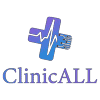Chronic Disease Management: If you’re looking for ways to improve your patients’ health, you should consider the role of remote patient monitoring. The benefits of this technology include reduced costs, lower hospital readmissions, and increased patient satisfaction. Whether you are a nurse, physician, or health care provider, you’ll find that remote monitoring is an effective tool that can help you make important decisions.
Reduces hospital readmissions
Remote patient monitoring is an effective way to improve health outcomes and lower healthcare costs. Readmissions are a major burden on medical institutions and patients.
A recent report from the Agency for Healthcare Research and Quality (AHRQ) revealed that hospital readmissions cost the United States economy a staggering $563 million annually. Readmissions occur for a wide variety of reasons. However, one of the most common is congestive heart failure. Studies show that patients with this condition are readmitted more often than those without it.

Hospital readmissions affect patients both physically and emotionally. These readmissions may be due to medically warranted reasons or they may be unjustified. Readmissions also cost hospitals millions of dollars in lost profits.
To help prevent avoidable hospital readmissions, the Affordable Care Act established the Hospital Readmissions Reduction Program. This program penalizes hospitals with higher than national average readmission rates. In the fiscal year 2015, the all-cause 30-day readmission rate was 5.2%.
RPM is a technology that has helped hospitals reduce readmissions for congestive heart failure. The use of wireless sensors and improved medications has also contributed to success.
Besides reducing readmissions, RPM has also been shown to improve health outcomes for chronic patients. Patients learn to take more responsibility for their own health. It can be used to optimize the care of patients with diabetes and other chronic conditions.
Hospitals across the country are now using advanced RPM solutions to enhance post-acute care. Many health insurers are launching RPM programs for high-risk populations. Increasingly, primary care physicians are using RPM solutions to help optimize chronic care management.
The University of Virginia (UVA) Health System and Broad Axe Care Coordination have joined forces to develop a program to reduce readmissions for certain medical conditions. Among their results: a 73% decrease in telehealth readmission rates and a 73% reduction in telehealth length of stay.
Using Bluetooth-enabled biometric devices, the telehealth team can collect and analyze biometric data and send it to a physician’s customized device. This data can be viewed on a secure web portal. Throughout the day, telehealth nurses review the data to provide coaching cues.
Promotes self-care and self-monitoring
One of the most important aspects of managing chronic diseases is the ability to promote self-care and self-monitoring. This involves a combination of monitoring, education, and support. It is an approach that gives patients the tools to manage their health, and also helps to decrease care costs and improve their quality of life.
Chronic disease is a complex and multifaceted medical condition that affects more than one in ten adults in the United States. As a result, it requires an array of skills and knowledge to effectively manage.
The World Health Organization (WHO) defines self-care as the ability to manage, prevent or deal with a health problem. There are several key concepts involved in this concept, such as symptom perception, coping with disability, and managing signs and symptoms. In addition, some patients may use autonomous behaviors to assist them.
For example, a recent systematic review identifies the role of social media in managing chronic conditions. This study suggests that promoting a self-management program that uses social networking can improve patient outcomes. However, implementing such an approach is not always easy. Specifically, a patient must be motivated to use the system.
Many different types of self-care interventions have been studied. These include individual support, group support, and telephone support. Various modes of delivery were used, but most studies focused on a combination of these.
For example, most interventions involved the training of interventionists. The intensity of these training sessions ranged from 0.75 to 100 hours. Studies were typically performed by activity specialists, nurses, and dieticians. Almost half of the interventions included telephone calls for reinforcement of the intervention.
Self-care and self-monitoring are two aspects of health care that are often overlooked. However, they can have a significant impact on patient care. To help physicians, patients, and other health professionals better understand these concepts, researchers conducted a scoping review. They looked at studies involving nine chronic conditions.
During the scoping process, the authors identified a number of common characteristics among self-care and self-monitoring studies. For example, these strategies are based on the principles of self-monitoring, which enables a patient to evaluate their daily activities, symptoms, and medication.
Reduces costs of Remote patient monitoring
Remote patient monitoring is a tool that can be used to decrease costs in chronic disease management. It can provide physicians with the information they need to make a timely diagnosis and reduce unnecessary hospitalizations and readmissions.
Many patients with chronic conditions require specialized care, which may not be available in certain parts of the country. A doctor can use a mobile device, audio, or live video to conduct a videoconference session. He or she can also send an email report or send an SMS to the patient.
Cost-effectiveness studies have shown that telehealth reduces direct health system and hospital costs. However, cost reductions are not always reported. For example, many economic analyses of remote monitoring do not include overall program costs. This means that the results of these studies can vary significantly.
One of the most important goals of chronic disease management is reducing unnecessary acute hospitalization. Remote monitoring in lieu of an in-home visit can help to lower the cost of acute hospitalizations, and can also reduce travel and staff wage costs. Several telehealth interventions have been designed to do just that.
Another potential area of savings is secondary care. Teletriage has been shown to reduce the number of in-person visits, and in the case of dermatology teletriage, the rate of in-person visits was reduced by 89%. The study also found that the telemonitoring program had a 23% lower odds of a hospital admission.
Other areas where costs may be decreased are in telehealth triage referrals, hospital avoidance, and productivity gains. Although the studies in these areas have not been conducted specifically, it is likely that these savings will occur.
While the majority of current economic analyses of remote monitoring do not report overall program costs, some of these studies have indicated that the cost of equipment has decreased. These costs are then passed on to consumers in the form of an out-of-pocket fee.
There is still room for improvement in the cost-effectiveness of telehealth. Future studies should examine the potential for reducing the payback period and threshold number of examinations.
Improves patient satisfaction in Chronic Disease Management
Remote patient monitoring improves patient satisfaction and reduces hospitalisations. In particular, remote monitoring can be a vital tool for patients who are diagnosed with chronic conditions. It helps to improve patient self-management, communication and shared decision making.
Chronic illnesses are the leading causes of disability in the US. They require regular monitoring and ongoing management. Often, people with such conditions have difficulty getting around and have difficulty visiting their healthcare providers.
A study examining the effect of remote monitoring on the health of chronic patients found a decrease in hospitalisation rates. The KLAS Research study also found a 25% reduction in emergency room visits.
In addition, many patients reported increased confidence and reassurance as a result of remote monitoring. For example, women with gestational diabetes said that they felt more confident after using the technology.
Similarly, patients with heart failure said that they were more comfortable discussing the data they collected. Having access to this information helped them to understand their symptoms and take actions to control them.
Researchers also found that remote monitoring helped patients to feel more engaged in their care. Patients were encouraged to change their medication regimens and take more personal responsibility for managing their disease.
Remote monitoring is increasingly used by many health systems. According to the AVIA Network, 70 percent of health systems have implemented at least one solution. Most of these solutions involve the use of wearable sensors, mobile apps and other platforms to collect and monitor health data. Using such technology allows physicians to monitor a patient’s condition in real time and provide better clinical care.
Remote monitoring is not only beneficial for patients with chronic diseases; it can benefit the entire US healthcare system. It can help decrease the costs of hospitalization, avoid avoidable readmissions and long stays in the emergency room.
Although research has not yet fully analyzed the impact of remote monitoring on patient satisfaction, findings are promising. Many patients have expressed concerns about the reliability of the technology. Others have noted that it may cause depersonalised care and increased out-of-pocket costs.





Phenix Health delivers online health services 24/7 provided by Australian doctors and healthcare professionals.